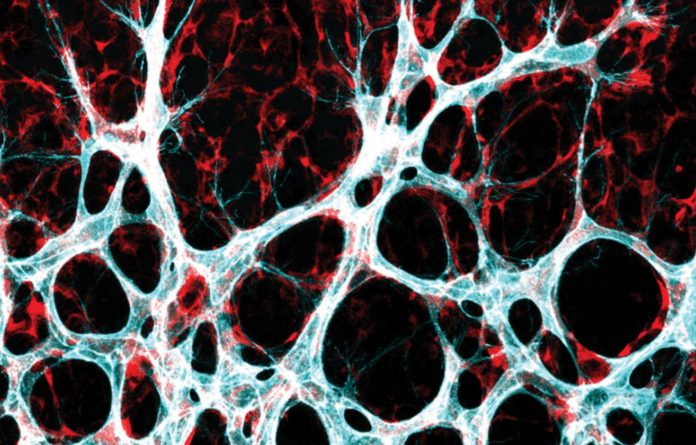Blood vessels run through the whole body and make sure that our organs get enough nutrients and oxygen they need.
We risk getting diseases if these intricately woven networks fail to function properly.
Vascular atrophy is often caused by heart conditions that get worse with age, but malignant tumors are marked by excessive growth of vessels that are going in the wrong direction.
New blood vessels growing in the wrong area is also linked to wet macular degeneration. In the worst-case scenario, the disorder can result in blindness.
It’s a nutritious door opener
“To help us develop targeted therapies for these kinds of disease,” says professor Potente from Charité (BIH), “we want to find out how exactly the growth of new blood vessels – a process called angiogenesis – is regulated within the body.”
His Angiogenesis and Metabolism Laboratory is part of the Berlin Center for Translational Vascular Biomedicine, which is a collaborative effort between the BIH, Charité – Universitätsmedizin Berlin, and the MDC.
Now, Potente with his team have made some big steps forward: The researchers write in Nature Metabolism that two proteins called YAP and TAZ play a critical role in allowing capillaries to sprout even under difficult metabolic conditions.
The Hippo signaling system, of which these proteins are a component, controls the size and number of organs in virtually every species.
“If these two molecules are active in the cells of the vessels’ inner wall – the endothelium – they read genes that lead to increased growth of certain surface transporters,” adds Potente, also a guest research scientist at the Max Delbrück Center for Molecular Medicine in the Helmholtz Association (MDC).
“These allow the vessel cells to absorb more nutrients that are important for growth and cell division.” Since YAP and TAZ both work in the same way, they act as a sort of door-opener.
“This increased absorption of nutrients leads to the activation of another protein, called mTOR,” Potente explains.
mTOR is a critical regulatory point in cells that regulates cell growth and division.
He continues, “This allows new blood vessel networks to expand.”
However, the researchers are still unsure which signals control YAP and TAZ activity in endothelial cells.
Insights from the retinas of mice
“we’ve discovered a mechanism that enables blood vessels to align their growth closely to the situation in their surroundings,” adds Professor Holger Gerhardt, head of the MDC’s Integrative Vascular Biology Laboratory.
“The mechanism stops endothelial cells from dividing if the metabolic resources needed for the process aren’t there.”
The results are based on mice studies. The mouse retina is an excellent model for studying the formation of blood vessels.
“Using genetically modified mouse lines, we showed how endothelial cells that don’t produce YAP and TAZ almost never divide,” Potente explains.
“This inhibited vessel growth in the mice.”
In this process, the TAZ protein is particularly significant, whereas, in most other types of cells, YAP is the deciding factor.
Critical molecular components
“Because new blood vessels frequently form in tissues with a poor blood supply” Potente adds, “endothelial cells must be able to grow in the most challenging metabolic conditions.”
“That’s why it’s so important for these cells to have molecular machinery that recognizes and reacts to subtle changes in the extracellular milieu.”
Potente and Gerhardt now aim to see how much the mechanism they outlined during tissue development is involved in regeneration and repair processes that rely largely on blood vessels, with the help of their teams.
“We’re primarily interested in finding out whether and, if relevant, how malfunctions in that signaling pathway can cause vascular diseases in humans,” Potente notes.
Image Credit: Getty
You were reading: This Allows New Blood Vessel Networks To Expand – New Research
